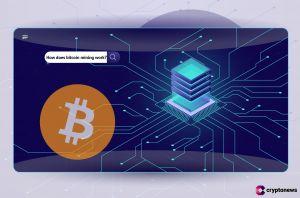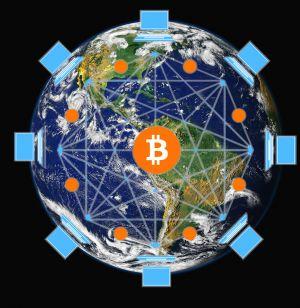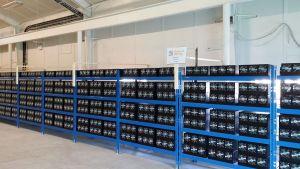In conventional fiat cash programs, governments merely print more cash when they should. However in bitcoin, cash isn’t printed in any respect – it’s found. Computer systems world wide ‘mine’ for cash by competing with one another.

In conventional fiscal system, governments and banks can (and do) challenge more cash at any time when they wish to. Nonetheless, nobody can do this in Bitcoin, for the reason that cash issuance course of revolves round mining – a particularly intelligent means of confirming Bitcoin transactions and recording them on a decentralized ledger on the similar time.
However how does Bitcoin mining work? On this information, we dive into the basics of Bitcoin mining and the important thing processes behind it.
What’s Bitcoin mining?
Bitcoin mining could be outlined as a means of “discovering” bitcoins. Very like gold, bitcoins are artificially restricted, and there can by no means be greater than 21 million BTC. Additionally, like gold, you have to allocate assets and laborious work to extract it. Nonetheless, in contrast to mining gold, bitcoins are designed to be minted utilizing the computational energy of hundreds of thousands of competing computer systems from everywhere in the world.

It could be tough to wrap your head round it at first, however in actual fact, it’s fairly genius. Everyone seems to be free to run a Bitcoin node and take a look at their luck at mining, however nobody is assured to be worthwhile at it. Nonetheless, these hundreds of thousands of computer systems guarantee one factor – the performance and safety of the community.
If you wish to dive deeper into the subject of “what’s bitcoin mining,” see our namesake information.
For now, all you have to know is that Bitcoin mining serves a number of functions:
- Secures the Bitcoin community.
- Incentivizes the miners to allocate their assets to the Bitcoin community.
- Confirms Bitcoin transactions.
- Ensures the decentralization of Bitcoin (which makes it free international peer-to-peer (P2P) cash).
- Makes bitcoins scarce and laborious to get.
- Penalizes unhealthy actors within the community by making it unprofitable to go towards the system.
How does mining work?
Folks can ship bitcoins (or another digital property) on a regular basis, nevertheless it doesn’t imply a lot until somebody retains tabs on all of them. That is very true with digital property that are tremendous simple to repeat. So to have a totally functioning digital money you have to hold a document on who paid what and to whom, and that’s primarily what banks do for us.
However how do we all know that individual A has despatched bitcoins to individual B if there aren’t any organizations to supervise it? How will we stop double-spending the place individual A sends the identical bitcoins to individual C?
The reply is Bitcoin mining.
The Bitcoin community replaces banks and different intermediaries by processing all of the community transactions, placing them into a listing, and locking them up into immutable blocks. Ultimately, it’s the miners who do all of the work – allocate their hashing energy to substantiate these transactions and document them right into a distributed public ledger.
Bitcoin mining requires a pc and particular Bitcoin program (consumer). Whenever you set up Bitcoin consumer in your pc, you develop into a miner and might compete with rival miners in fixing complicated math puzzles. Each ten minutes, all computer systems attempt to clear up a block with the most recent transaction knowledge in it utilizing cryptographic hash capabilities.
What are bitcoin hashes?
Each solved block is added to the general public ledger. Primarily, the distributed public ledger consists of an extended checklist of blocks which make up the Bitcoin blockchain.
The Bitcoin distributed ledger aka blockchain is a public document of all of the transactions that befell on the community. Because the file is public, it may be explored by anybody utilizing any bitcoin block explorer. A brand new block is added to the ledger roughly each 10 minutes. Due to this fact, the blockchain measurement is constantly rising. An up to date copy on a brand new block is shared between miners, so everybody all the time is aware of what’s happening.
Now, what objective does that serve?
In conventional programs, a ledger have to be trusted, that means that there needs to be a trusted individual or entity which oversees it and ensures nobody tampers with it. Within the Bitcoin community, that function is performed by the miners.
When a block of transactions is prepared, the miners must course of it. They apply the SHA-256 Cryptographic Hash Algorithm to show right into a seemingly random sequence of numbers and letters referred to as a hash. The hash is saved along with the block on the finish of the blockchain at that exact time limit, which serves as a proof of labor and validation.

However how are these hashes so dependable?
Effectively, it’s simple to make a hash out of information included within the Bitcoin block. Nonetheless, it’s virtually not possible to decrypt the information simply by trying on the hash as a result of it’s totally random and every hash is exclusive. In the event you change even one image within the unique enter, you’ll get a completely completely different hash. Due to this fact, it’s utterly not possible to foretell the output and the one option to match it’s by blind guessing, which is what miners do.
Nonetheless, the miners don’t merely wrap the transactions into hashes however use another items of information, too. One in every of these items is the hash of the final block.
Since every block’s hash accommodates the hash of the earlier block, it really works as like a digital a wax seal. It ensures that the produced block, in addition to each block earlier than it, is reliable. If the block is falsified, different miners can see it and reject it.
In different phrases, a faux transaction would change a block together with its unique hash. Since every block’s hash is used to create the following block’s hash, that might have an effect on all blocks on the chain. So if somebody checked it, they might instantly discover the distinction between right and false blocks since they don’t match those already verified on the blockchain.
That’s how miners “seal off” a block. Now let’s take a look on the competitors half.

Competing for cash
We’ve already established that the one option to seal off a block is to guess the output of the hash accurately, and essentially the most environment friendly manner to take action is random guessing finished by computer systems.
All miners compete with one another who can guess it quicker utilizing the mining software program. The miner who’s first to do that mines the block (which takes billions of random computer-generated guesses from everywhere in the world) and reaps the block reward which is at the moment set at 12.5 BTC per block and reduces by half each 210,000 blocks. On the present price, it means the block reward will fall to six.25 BTC per block someday in 2021.
Primarily, it serves as an incentive to maintain on mining to maintain the system working. Because the block rewards are regularly lowering, it’s anticipated BTC worth will proceed to understand. Nonetheless, block rewards aren’t the one incentive mechanism for the miners, as in addition they share the collective Bitcoin transaction charges.
Try this information to study extra in regards to the worth of bitcoins.








